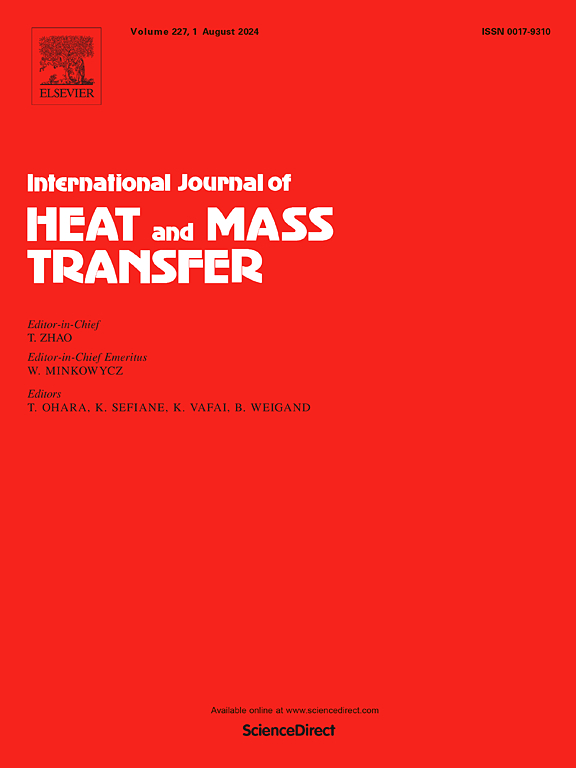影响pemfc中多尺度多孔输运层界面上液态水行为的关键因素
IF 5
2区 工程技术
Q1 ENGINEERING, MECHANICAL
International Journal of Heat and Mass Transfer
Pub Date : 2025-04-26
DOI:10.1016/j.ijheatmasstransfer.2025.127144
引用次数: 0
摘要
为了保证向反应区输送足够的反应气体,保证质子交换膜燃料电池(PEMFC)的最佳运行,促进产品液态水的快速排出至关重要。多孔传输层内的孔隙结构作为从膜电极组件(MEA)中去除液态水的途径。目前关于这一专题的大多数研究集中在多边环境协定单一组成部分内液态水的输送。然而,液态水在多孔传递层中跨尺度和界面传递的机理研究相对较少。本文综述了影响液态水在CL/MPL、MPL/GDB和GDB/GC界面分布和输运行为的主要因素。这些包括接口和相关组件的结构特性和物理参数,以及PEMFC的工作条件。并介绍了冲击机理。本综述的目的是从水管理的角度对多孔输运层的设计和优化提供见解,以提高pemfc的耐久性和功率密度。本文章由计算机程序翻译,如有差异,请以英文原文为准。

Key factors impacting liquid water behaviors across the interfaces of the multiple-scale porous transport layers in PEMFCs
It is of the utmost importance to facilitate the rapid drainage of the product liquid water in order to guarantee the delivery of sufficient reaction gas to the reaction zone and ensure the optimal operation of the proton exchange membrane fuel cell (PEMFC). The pore structure within the porous transport layer serves as pathways for the removal of liquid water from the membrane electrode assembly (MEA). The majority of existing studies on this topic focus on the transport of liquid water within a single component of the MEA. However, the mechanisms of liquid water transfer across scales and interfaces in the porous transfer layer remain relatively understudied. This paper presents a review of the primary factors influencing the distribution and transport behaviors of liquid water across the CL/MPL, MPL/GDB, and GDB/GC interfaces. These include the structural characteristics and physical parameters of the interfaces and relevant components, as well as the operating conditions of the PEMFC. The impacting mechanism is also introduced. The objective of this review is to provide insights into the design and optimization of porous transport layers from a water management perspective, with the aim of improving the durability and power density of PEMFCs.
求助全文
通过发布文献求助,成功后即可免费获取论文全文。
去求助
来源期刊
CiteScore
10.30
自引率
13.50%
发文量
1319
审稿时长
41 days
期刊介绍:
International Journal of Heat and Mass Transfer is the vehicle for the exchange of basic ideas in heat and mass transfer between research workers and engineers throughout the world. It focuses on both analytical and experimental research, with an emphasis on contributions which increase the basic understanding of transfer processes and their application to engineering problems.
Topics include:
-New methods of measuring and/or correlating transport-property data
-Energy engineering
-Environmental applications of heat and/or mass transfer

 求助内容:
求助内容: 应助结果提醒方式:
应助结果提醒方式:


